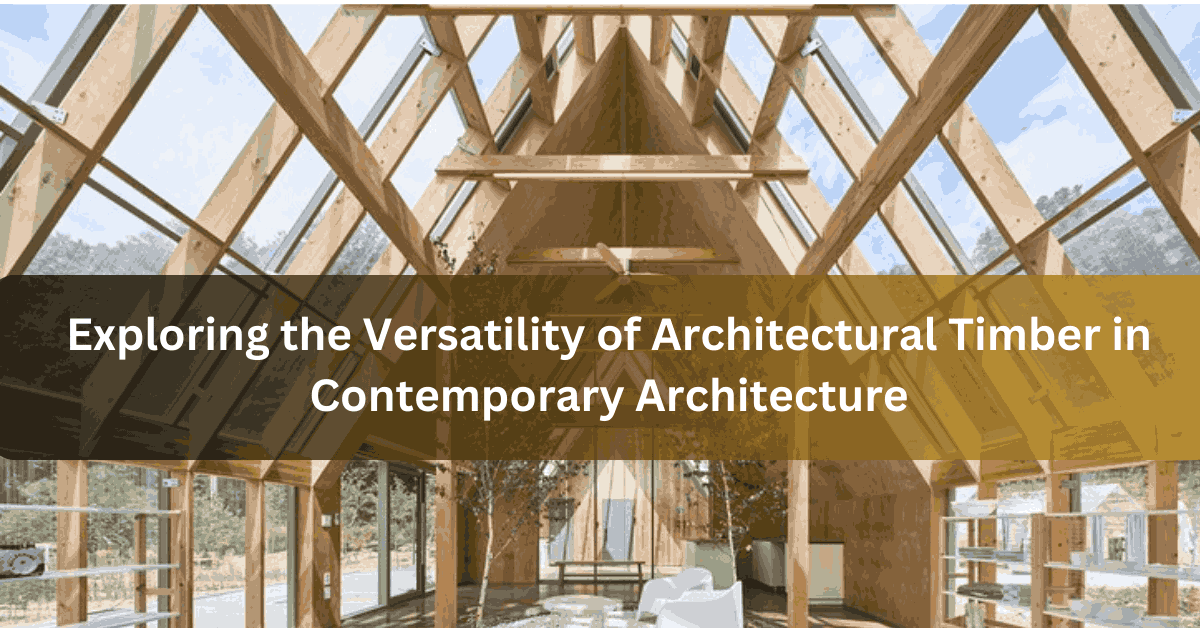Exploring the Versatility of Architectural Timber in Contemporary Architecture
Architecture, as a form of art and science, is continually evolving. Architects and designers are exploring new materials and techniques to create functional, aesthetically pleasing, and environmentally responsible structures.
Architectural timber has emerged as a standout choice among these materials, blending traditional charm and modern innovation.
This article dives into the versatile applications of this material in contemporary architecture, showcasing its ability to harmonise with various design philosophies and its appropriateness for a variety of building tasks.
A Sustainable Choice for Modern Construction
The use of wood in construction is witnessing a resurgence thanks to its sustainability. As a renewable resource, it provides a sustainable substitute for conventional building materials like steel and concrete. Buildings constructed with this natural material contribute to a smaller carbon footprint.
Moreover, the latest advancements in wood technology have enhanced its durability and resistance, making it a reliable choice for various architectural applications. The adaptability of wood to different climates and its inherent thermal properties make it particularly appealing for energy-efficient building designs.
Innovative Techniques in Wood Design
Contemporary architecture has seen a significant shift in how wood is used. Thanks to technological advancements, architects can now create more creative uses of wood. The possibilities are endless, from intricate wooden facades to sweeping, curved wooden structures.
These innovative techniques demonstrate the material’s versatility and its potential to transform spaces into works of art. Introducing new treatments and finishes has further expanded the scope of wood’s application, allowing for greater creativity and flexibility in design.
Wood in Interior Design: Warmth and Elegance
The use of wood extends beyond exterior applications. It brings a sense of warmth and elegance that few materials can match inside buildings. Whether using wooden beams, panels, or furniture, it creates an inviting atmosphere.
This material’s versatility in interior design lies in its ability to complement both traditional and modern aesthetics, making it a favourite among designers and homeowners alike.
The tactile quality of wood adds a dimension of sensory experience to interiors, enhancing the overall ambience. Additionally, the diverse range of wood types, from soft pines to hard oaks, offers endless possibilities for customization and personalization in interior design.
Wood and Technology: A Harmonious Blend
Integrating technology with wood in construction has opened new avenues for architectural innovation. From computer-aided design (CAD) to cutting-edge manufacturing processes, technology has created complex wooden structures with precision and efficiency.
This harmonious blend of tradition and technology is practical and pushes the envelope in architectural design.
Developing engineered wood products, such as cross-laminated timber, is revolutionising the construction industry, allowing for greater strength and stability in wooden structures.
Furthermore, digital tools enable architects to experiment with wood in previously unimaginable ways, leading to groundbreaking designs and construction techniques.
Wood in Urban Spaces: Connecting with Nature
In urban environments, the use of wood serves as a connection to nature, an element often missing in cityscapes. Architectural timber in public buildings, parks, and other communal spaces creates a natural, welcoming ambience.
This connection to nature is aesthetic and has psychological benefits, enhancing the well-being of those interacting with these spaces. Incorporating wood in urban designs helps to soften the harsh lines of concrete and steel, providing a sense of tranquillity and organic beauty.
Conclusion
Architectural timber has proven to be a material that marries functionality with aesthetic appeal in contemporary architecture. Its ability to adapt to various design needs while being environmentally sustainable makes it a material of choice for the future of construction.
As people continue to explore and innovate in the field of architecture, it is clear that wood, in its many forms, will remain a pivotal element in the design of beautiful and sustainable spaces.



